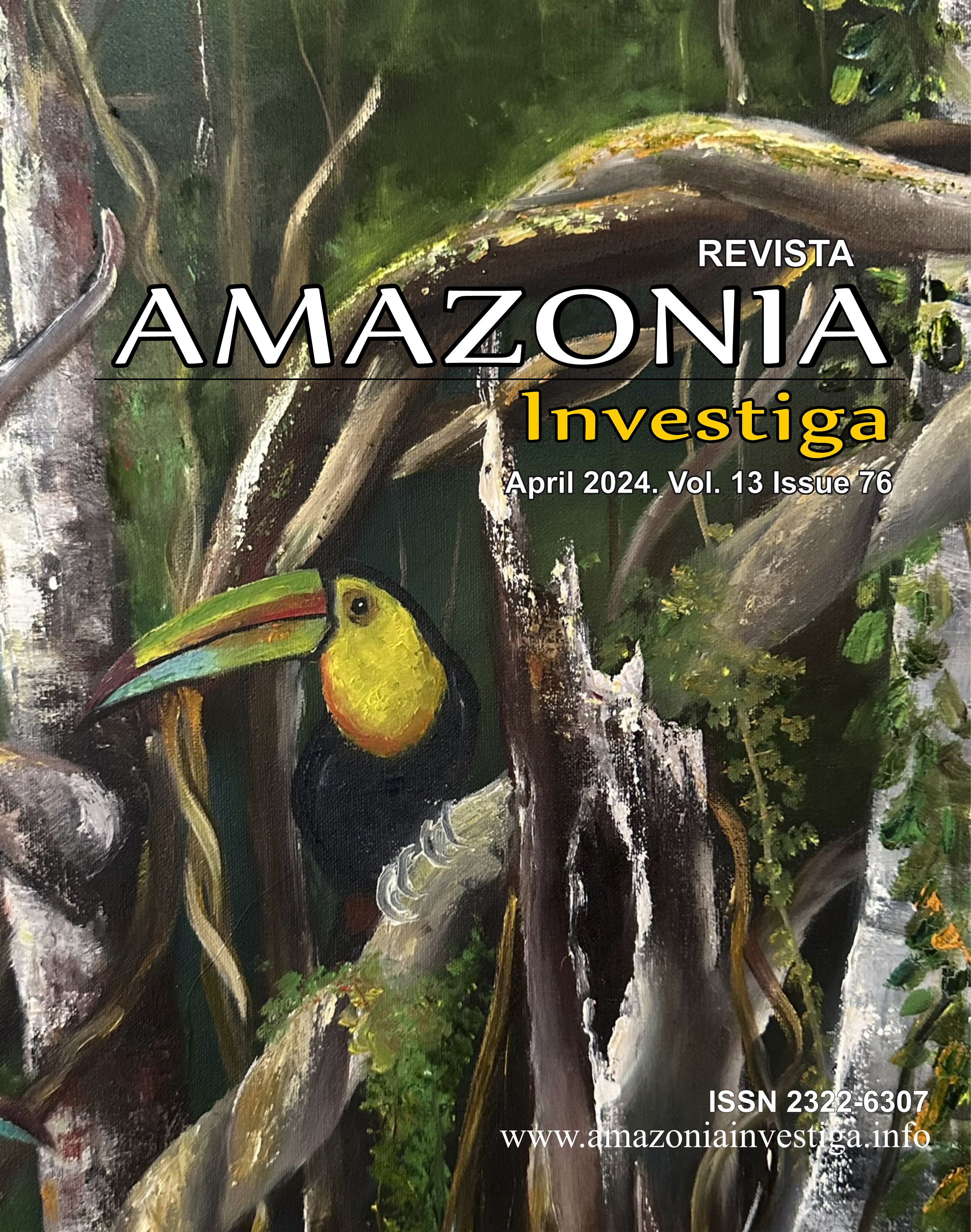Journalism in times of war: challenges and opportunities in the digital age
Publicado 2024-04-30
Palabras clave
- ethics of conflict portrayal, media literariness, influence of social media, conflict-sensitive journalism, emotional intelligence.
Cómo citar
Derechos de autor 2024 Amazonia Investiga

Esta obra está bajo una licencia internacional Creative Commons Atribución 4.0.
Resumen
The current conditions of journalistic activity demonstrate the importance of the ability to work properly in times of conflict and instability. The peculiarities of such work determined the purpose of the article - to study the problems of conflict-sensitive journalism as one of the trends of our time. This goal was achieved through the use of scientific methods. First of all, we are talking about the method of content analysis of professional scientific literature, the use of methods of generalisation and systematisation.
The results of the study show that for objective coverage of events, it is recommended to use the idea of a ‘just’ war, to carefully assess the opinions and views of different segments of the population regarding the war, not to be in the position of propagandists, to focus on the coverage of the process, to demonstrate the interests and concerns of the warring parties, avoiding the understanding of war as a concept of struggle for the same ideas. As shown in the article, it is important to avoid ‘hate speech’, which is the basis for the development of discriminatory policies. The conclusions note that journalistic work should not be understood as entertainment or selfish practice.
Descargas
Citas
- Antonopoulos, N., Konidaris, A., Polykalas, S., & Lamprou, E. (2020). Online journalism: crowdsourcing, and media websites in an era of participation. Studies in Media and Communication, 8(1), 25. https://doi.org/10.11114/smc.v8i1.4734
- Baider, F., & Constantinou, M. (2020). Covert hate speech. Journal of Language Aggression and Conflict, 8(2), 262-287. https://doi.org/10.1075/jlac.00040.bai
- Cheruiyot, D. (2022). Comparing Risks to Journalism: Media Criticism in the Digital Hate. Digital Journalism, 12(3), 294-313. https://doi.org/10.1080/21670811.2022.2030243
- Choi, J. P., & Yang, S. (2021). Investigative journalism and media capture in the digital age. Information Economics and Policy, 57, 100942. https://doi.org/10.1016/j.infoecopol.2021.100942
- Dadakhonov, A. O. (2024). Analysis of media and information literacy definitions: a qualitative approach. Studies in Media and Communication, 12(2), 116. https://doi.org/10.11114/smc.v12i2.6659
- Derviş, L. (2023). Transformation of geopolitical perceptions in the Russian-Ukrainian war: impact on regional relations in the future. Futurity of Social Sciences, 1(1), 21-34. https://doi.org/10.57125/FS.2023.03.20.02
- Guta, H. A. (2021). Journalism ethics and conflict-sensitive reporting. In Global Media Ethics and the Digital Revolution (pp. 186-201). Routledge.
- Hackett, R. A. (2012). Reporting conflict: new directions in peace journalism. Australian Journal of International Affairs, 66(1), 94-96.
- Howard, R. (2015). Conflict-sensitive journalism. In Communication and Peace (pp. 62-75). Routledge. https://acortar.link/gdfSCt
- Jimoh, J., & Kayode, J. (2018). Imperative of peace and conflict-sensitive journalism in development. In Advances in Media, Entertainment, and the Arts (pp. 150-171). IGI Global. https://doi.org/10.4018/978-1-5225-3376-4.ch008
- Johnson, B. G., Thomas, R. J., & Kelling, K. (2020). Boundaries of hate: ethical implications of the discursive construction of hate speech in U.S. opinion journalism. Journal of Media Ethics, 36(1), 1-16. https://doi.org/10.1080/23736992.2020.1841643
- Karpchuk, N., & Makar, Y. (2023). Practice of attached journalism in Ukraine. Mediaforum: Analytics, Forecasts, Information Management, (12), 191-204. https://doi.org/10.31861/mediaforum.2023.12.191-204
- Kostrubitska, A. V. (2022). Freedom of speech and certain aspects of the state regulation of mass media activity during the war. Scientific Notes of Taurida V.I. Vernadsky University, Series Public Administration, (3), 93-97. https://doi.org/10.32838/tnu-2663-6468/2022.3/16
- Kurok, О., Hrytsenko, A., Chumachenko, О., & Kryzhanivsky, V. (2023). Applying ploughs for determining the optimal depth of soil cultivation: the development of the scientific views. Amazonia Investiga, 12(62), 237-335. https://doi.org/10.34069/ai/2023.62.02.33
- Lipschultz, J. H. (2020). New and mobile media technologies, innovation, and investment. In Social Media Communication (p. 183–204). Routledge. https://doi.org/10.4324/9780429202834-7
- Martynenko, M., Lysytsia, N., Martynenko, A., & Us, M. (2023). Design as a key factor in brand building: value congruence and brand identity through design. Futurity Economics&Law, 3(3), 32-48. https://doi.org/10.57125/FEL.2023.09.25.02
- Nilsen, A. B. (2014). Hate speech. FLEKS - Scandinavian Journal of Intercultural Theory and Practice, 1(1). https://doi.org/10.7577/fleks.852
- Romaniuk, L., Kurok О., Hrytsenko, A., Tkachenko, N., & Chumachenko, О. (2023). Transformation of Ukraine’s cultural heritage against the background of historical and cultural changes: international aspect. Synesis, 15(4), 374-391. https://seer.ucp.br/seer/index.php/synesis/article/view/2819
- Rudenko, O., & Kharkov, S. (2023). Philosophical studies of the future in the context of postmodern knowledge: theory, methodology. Futurity Philosophy, 2(3), 4-16. https://doi.org/10.57125/FP.2023.09.30.01
- Owino, R., & Karani, B.K. (2022). Conflict sensitive journalism and elections. Kabarak Journal of Research & Innovation, 11(3), 299-307. https://doi.org/10.58216/kjri.v11i3.74
- Said-Hung, E., Montero-Díaz, J., & Sánchez-Esparza, M. (2023). The promotion of hate speech: from a media and journalism Perspective. Journalism Practice, 18(2), 1-7. https://doi.org/10.1080/17512786.2023.2288918
- Salaverría, R. (2019). Digital journalism: 25 years of research. Review article. El Profesional de la Información, 28(1). https://doi.org/10.3145/epi.2019.ene.01
- Silva, D. d. S. (2016). Cultural journalism in a digital environment: new models, practices and possibilities (Doctoral thesis). RUN – Repositório da Universidade Nova de Lisboa. Retieved from http://hdl.handle.net/10362/17022
- Skurtul, H. S. (2023). Podcasting in Ukraine after the Russia’s full-scale military invasion of Ukraine. In The European Development Trends in Journalism, Pr, Media and Communication. Publishing house "Baltija Publishing".
- Starkova, G. V., & Yaresko, K. V. (2020). Investigative journalism in Ukraine and its influences. Scientific Notes of Taurida National V.I. Vernadsky University, Series Philology. Social Communications, 4(2), 222-229. https://doi.org/10.32838/2663-6069/2020.2-4/34
- Tkhorzhevska, T. (2023). Sensitive journalism as a conflict settlement technology. Dialog: Media Studios, (29), 137-146. https://doi.org/10.18524/2308-3255.2023.29.300643
- Vasilenko, M. (2021). Perspectives of new journalism in Ukraine. Polemical Notes. Picture, 36(2), 54-2. https://doi.org/10.21272/obraz.2021.2(36)-54-62
- Zhytnikova, A. (2023). Communication potential of Solutions Journalism in Ukraine. Dialog: Media Studios, (28), 60-67. https://doi.org/10.18524/2308-3255.2022.28.268485











